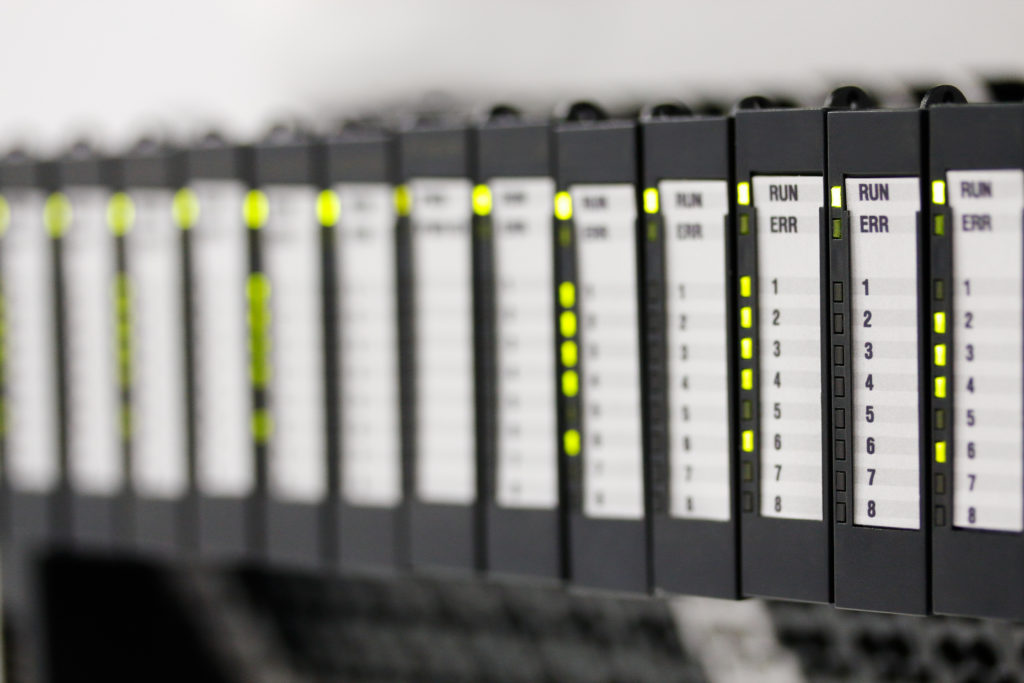Programmable Logic Controllers or PLC’s are used in a variety of applications and can range from basic to extremely complex. The question we address here today is, do you need a Safety PLC or can you utilize a Standard PLC in your design?
Each piece of automation control has its own safety requirements based on the safety circuit. There are four categories for safety circuits.
Category 1
This includes a single channel to safety relay and is the lowest category of safety circuits.
Category 2
This includes two channels for safety circuit, one is hardwired to an emergency stop chain and the second channel can be hardwired or PLC monitoring of the contacts on the safety switches.
Category 3
This includes two hardwired channels for a safety circuit, this would also include drives with a “Safe Off” feature.
Category 4
Has two hardwired channels for a safety circuit with a self monitoring safety relay. This is the most commonly used category, although it is also the most rigorous to implement and maintain.
When designing a system with a Standard PLC there are many benefits. The main benefit is of course the ease of use. They are simple to wire and to troubleshoot and generally don’t require an experienced maintenance technician to install and maintain. This is obviously an appeal for some smaller manufacturing facilities that may not staff a maintenance technician on site all the time. There are however some drawbacks to using a Standard PLC, the main one being the different relay types. Problems tend to increase with an increase in the relays and can become complicated. This can lead to difficulty in diagnostics and poor or inaccurate status indicators. There can also be some difficulty when attempting to install multiple e-stop zones.
A Safety PLC is purposely built, tested and certified to meet international safety standards right off the shelf. These requirements make Safety PLCs different in many ways. The main focus on a Safety PLC is the redundancy of onboard devices. These devices are continuously monitored by a watchdog circuit. There is also additional circuitry between the output switching and the actual device which will detect system failure and engage a safe shut down by reverting to a known state. The benefits of a Safety PLC often outweigh the additional costs that are associated with purchasing and maintenance. There is generally a cost savings on initial field wiring, they are flexible, scalable, have excellent diagnostic capability and offer multiple e-stop zone applications. There are some hurdles when using a Safety PLC though, the cost is higher and these specialized units require programming which may be too complex in some applications. They also generally require a highly skilled maintenance team.
Ultimately, selecting a Safety PLC can be cost effective if you can support the maintenance and have a skilled team accessible to maintain the equipment. The use of Standard PLC is a simple and easy solution if your relay requirements are not extensive and you are operating with less than two e-stop zones.
